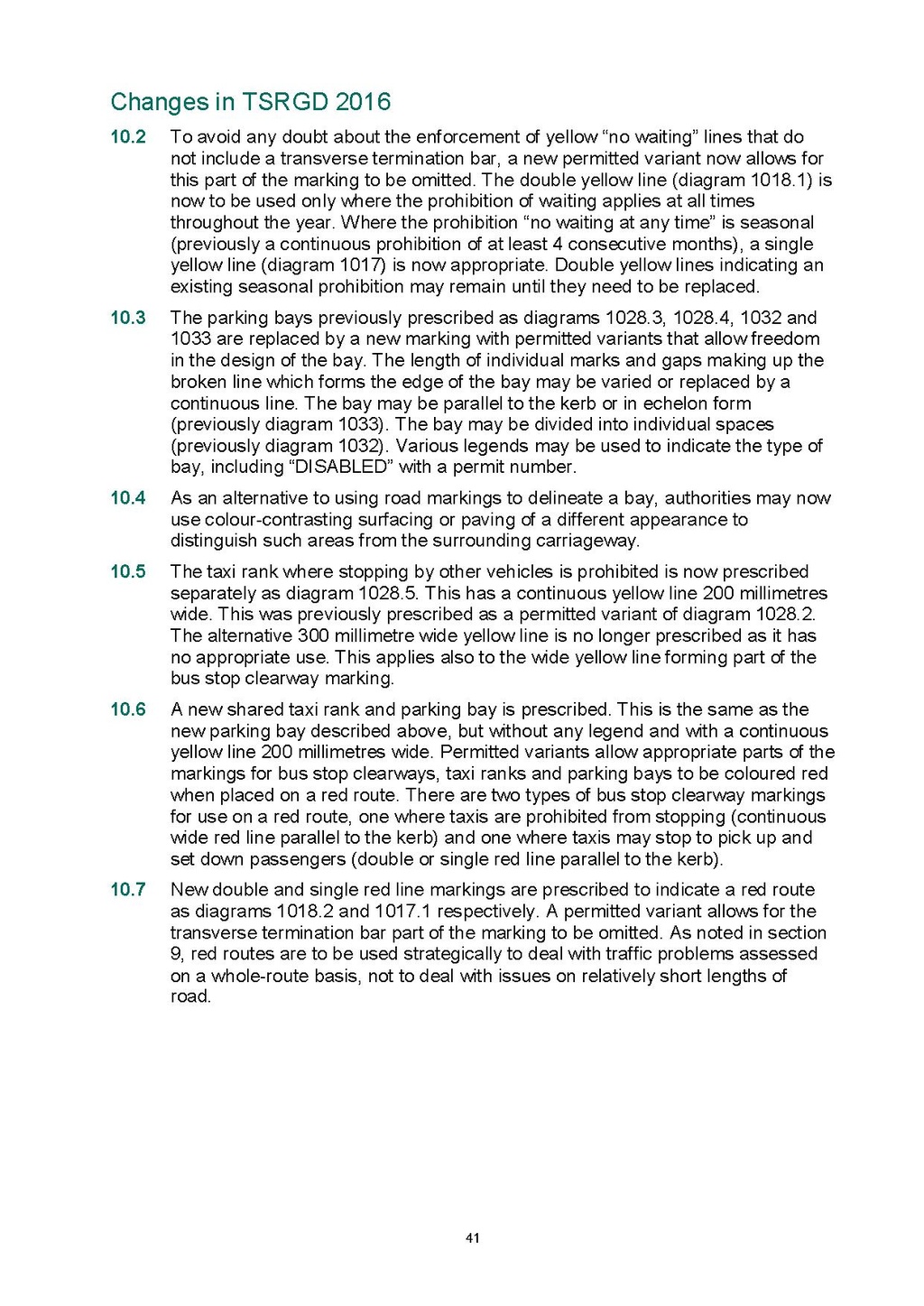This page has been validated.
Changes in TSRGD 2016
10.2
To avoid any doubt about the enforcement of yellow "no waiting" lines that do not include a transverse termination bar, a new permitted variant now allows for this part of the marking to be omitted. The double yellow line (diagram 1018.1) is now to be used only where the prohibition of waiting applies at all times throughout the year. Where the prohibition "no waiting at any time" is seasonal (previously a continuous prohibition of at least 4 consecutive months), a single yellow line (diagram 1017) is now appropriate. Double yellow lines indicating an existing seasonal prohibition may remain until they need to be replaced.
10.3
The parking bays previously prescribed as diagrams 1028.3, 1028.4, 1032 and 1033 are replaced by a new marking with permitted variants that allow freedom in the design of the bay. The length of individual marks and gaps making up the broken line which forms the edge of the bay may be varied or replaced by a continuous line. The bay may be parallel to the kerb or in echelon form (previously diagram 1033). The bay may be divided into individual spaces (previously diagram 1032). Various legends may be used to indicate the type of bay, including "DISABLED" with a permit number.
10.4
As an alternative to using road markings to delineate a bay, authorities may now use colour-contrasting surfacing or paving of a different appearance to distinguish such areas from the surrounding carriageway.
10.5
The taxi rank where stopping by other vehicles is prohibited is now prescribed separately as diagram 1028.5. This has a continuous yellow line 200 millimetres wide. This was previously prescribed as a permitted variant of diagram 1028.2. The alternative 300 millimetre wide yellow line is no longer prescribed as it has no appropriate use. This applies also to the wide yellow line forming part of the bus stop clearway marking.
10.6
A new shared taxi rank and parking bay is prescribed. This is the same as the new parking bay described above, but without any legend and with a continuous yellow line 200 millimetres wide. Permitted variants allow appropriate parts of the markings for bus stop clearways, taxi ranks and parking bays to be coloured red when placed on a red route. There are two types of bus stop clearway markings for use on a red route, one where taxis are prohibited from stopping (continuous wide red line parallel to the kerb) and one where taxis may stop to pick up and set down passengers (double or single red line parallel to the kerb).
10.7
New double and single red line markings are prescribed to indicate a red route as diagrams 1018.2 and 1017.1 respectively. A permitted variant allows for the transverse termination bar part of the marking to be omitted. As noted in section 9, red routes are to be used strategically to deal with traffic problems assessed on a whole-route basis, not to deal with issues on relatively short lengths of road.
41
